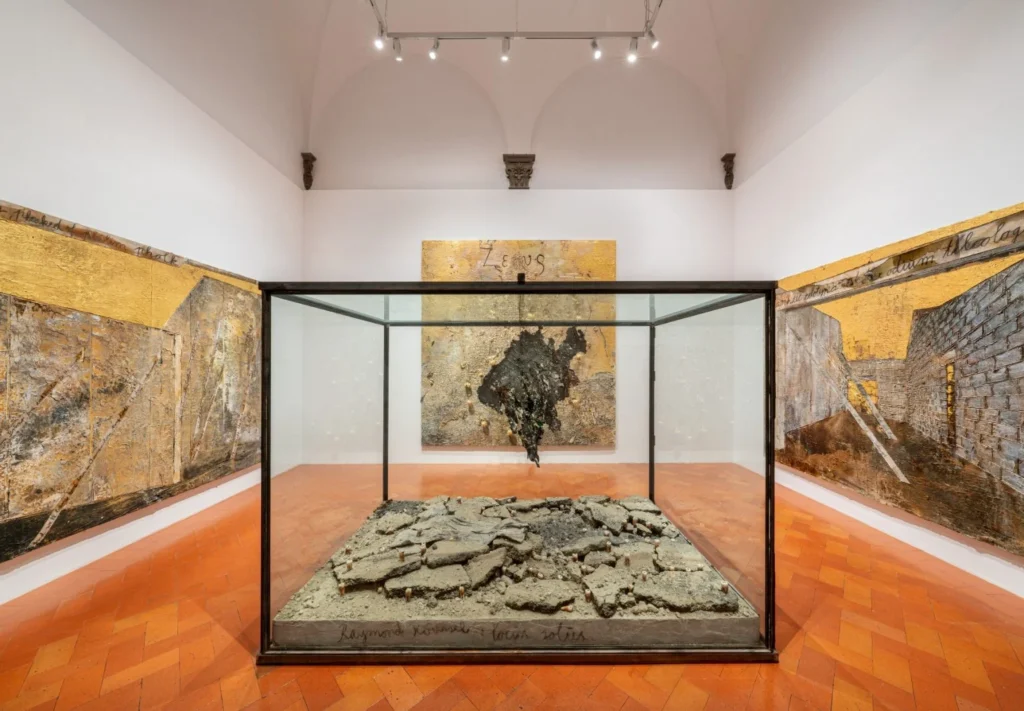
An exhibition featuring both old and recent works is creating a buzz in a Florentine palazzo.

Currently, a room within a grand Florentine palazzo is adorned from floor to ceiling with shimmering gold. This is not just another lavish private chapel from the early Renaissance, sponsored by a wealthy merchant family. Instead, these densely arranged paintings, which extend up to the ceiling in a salon-style display, are part of a significant exhibition featuring new and past works by Anselm Kiefer at Palazzo Strozzi, available for viewing until July 21.
These pieces might also provoke thoughts of a transcendent, spiritual domain. Anselm Kiefer, a highly acclaimed German artist of his era, is renowned for his capacity to embody grand narratives of history, memory, philosophy, and mythology on canvas, transforming them in what has been termed an alchemical process.
The exhibition begins with “Engelssturz” (Fall of the Angel) (2022-23), located in the palazzo’s central courtyard. It portrays a scene from the Book of Revelation where the archangel Michael, embodying Good, combats the rebel angels, symbols of Evil. This timeless theme, as pertinent now as in the Renaissance, is central to the exhibition, prompting deep contemplation about our individual selves, humanity, our collective history, and the society we aspire to create.
“The Holy Spirit and the Trinity concepts continue to fascinate me,” Kiefer remarked in a recent discussion with Arturo Galansino, the director of Palazzo Strozzi. “Theodicy, the philosophical study of divine justice in the face of the world’s evil, is particularly compelling. It posits that despite God’s inherent goodness, evil persists in the world. Theologians suggest that this paradox is due to the existence of free will.”

Kiefer’s paintings, appropriately dense with references to literature, poetry, philosophy, religious texts, and ancient myths, are layered to the point of almost becoming relief sculptures. He employs raw materials such as seeds, sand, and ashes, applied onto substantial slabs of lead, for their evocative qualities rather than for mere description. Thus, the artworks command a monumental presence, even when mounted on a wall.
The exhibition features lead-printed versions from the 2000s of photographs captured in 1969, known as Kiefer’s “Heroic Symbols” series. The artist is depicted in these images performing what he describes as “occupations” across different European locations. In a notable instance, he wore the Wehrmacht officer uniform from the Nazi era, which was his father’s, and performed a gesture evoking the controversial Sieg Heil salute. Kiefer’s work repeatedly revisits the burdensome history of Germany’s recent past.